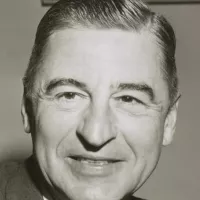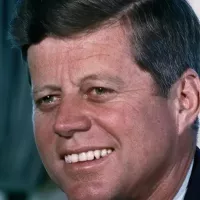The National Association for the Advancement of Colored People (NAACP) is a prominent American civil rights organization founded in 1909. It emerged from an interracial effort led by figures like W.E.B. Du Bois, Mary White Ovington and Ida B. Wells, aiming to combat racial injustice against African Americans. Throughout its history, influential leaders such as Thurgood Marshall and Roy Wilkins have guided the organization. As the largest and one of the oldest civil rights groups in the United States, the NAACP has been at the forefront of advocating for equality and justice for African Americans.
1901: Pan-American Exposition Caricatures
The Pan-American Exposition of 1901 in Buffalo, New York, featured disparaging caricatures of slave life in the South and life in Africa. Mary Talbert informed W. E. B. Du Bois, sparking a coalition to form.
1905: Meeting of African-American Leaders
In 1905, thirty-two prominent African-American leaders met to discuss the challenges facing African Americans and potential strategies and solutions, focusing on Southern states' disenfranchisement of blacks.
1907: Niagara Movement Meeting in Boston
In 1907, the Niagara Movement held a meeting in Boston, Massachusetts, continuing their discussions and work on civil rights issues.
1908: Disenfranchisement of Blacks
By 1908, every southern state had established laws to disenfranchise blacks, excluding most from the political system, and Jim Crow statutes legalized racial segregation, which the NAACP worked to overturn through litigation.
January 1909: Organizing for Black Civil Rights
In January 1909, Mary White Ovington, journalist William English Walling, and Henry Moskowitz met in New York City to organize for black civil rights. They sought support from prominent Americans and set a meeting for February 12, 1909, the centennial of Abraham Lincoln's birth.
February 12, 1909: Organization Founding Date
February 12, 1909, coinciding with Abraham Lincoln's 100th birthday, is often cited as the NAACP's founding date, despite the first large meeting occurring three months later. The establishment of the date aimed at honoring President Abraham Lincoln, who emancipated enslaved African Americans.
May 30, 1909: Niagara Movement Conference
On May 30, 1909, the Niagara Movement conference was held at New York City's Henry Street Settlement House. An organization of more than 40 people was formed, identifying as the National Negro Committee. Lillian Wald, founder of the Henry Street Settlement, was among the founding members.
1909: NAACP Founded
In 1909, the NAACP was founded. Seven members of the Niagara Movement joined the NAACP's Board of Directors. The Niagara Movement, formed exclusively by African Americans, had a more radical platform than the NAACP, which included four European American founders: Mary White Ovington, Henry Moskowitz, William English Walling, and Oswald Garrison Villard.
1909: Formation of NAACP
In 1909, the National Association for the Advancement of Colored People (NAACP) was formed as an interracial organization. The goal was to advance justice for African Americans, and the founding group included W. E. B. Du Bois, Mary White Ovington, Moorfield Storey, Ida B. Wells, Lillian Wald, and Henry Moskowitz.
1910: Disbandment of the Niagara Movement
In 1910, The Niagara Movement disbanded due to limited resources and internal conflict. Seven of its members joined the Board of Directors of the NAACP, which had been founded in 1909.
1911: Incorporation of the NAACP
In 1911, the NAACP was incorporated, solidifying its mission and formal structure as a civil rights organization.
1913: Expansion of NAACP Membership
In 1913, seven more branches were added as the NAACP began to welcome new members, furthering its growth.
1913: NAACP Opposes Wilson's Segregation Policies
In 1913, the NAACP organized opposition to President Woodrow Wilson's introduction of racial segregation into federal government policy, workplaces, and hiring.
1914: NAACP Membership and Influence
By 1914, the NAACP had 6,000 members and 50 branches, and was influential in securing the right for African Americans to serve as military officers in World War I.
1914: Joel Spingarn Becomes Chairman of NAACP
In 1914, Professor Emeritus Joel Spingarn of Columbia University became chairman of the NAACP. He recruited Jewish leaders like Jacob Schiff, Jacob Billikopf, and Rabbi Stephen Wise for the board.
1915: Growth of NAACP Branches and Membership
By 1915, the NAACP had grown to 50 branches with 6,000 members, indicating increasing support and influence.
1915: Moorfield Storey's Presidency Ends
In 1915, Moorfield Storey, a white attorney, ended his term as the president of the NAACP, a position he had held since its founding. During his tenure, W.E.B. Du Bois served as editor of the association's magazine, "The Crisis".
1915: NAACP Protests 'The Birth of a Nation'
In 1915, the NAACP led protests against the film 'The Birth of a Nation'.
1915: Guinn v. United States
In 1915, the NAACP played a significant role in challenging Oklahoma's discriminatory grandfather clause in Guinn v. United States.
1916: James Weldon Johnson Joins NAACP
In 1916, James Weldon Johnson was invited by chairman Joel Spingarn to serve as field secretary of the NAACP, contributing to a significant increase in membership.
1917: Buchanan v. Warley
In 1917, the NAACP persuaded the Supreme Court to rule in Buchanan v. Warley that state and local governments cannot officially segregate African Americans into separate residential districts.
October 1919: NAACP Investigates Elaine Race Riot
In October 1919, the NAACP sent Walter F. White to Phillips County, Arkansas, to investigate the Elaine Race Riot, where white vigilantes and federal troops killed over 200 black tenant farmers after an attack on a sharecroppers' union meeting. White later published a report on the riot in the Chicago Daily News.
1920: Expansion into the South
By 1920, the NAACP had 74 chapters in the South, including every state, despite the challenges of Jim Crow violence.
1920: NAACP Branches and Membership Surge
By 1920, the NAACP had experienced significant growth, reaching 395 branches and over 90,000 members.
1920: Leadership Roles in NAACP
From 1920 to 1958, James Weldon Johnson and Walter F. White successively served as executive secretary and acted as chief operating officer. They were more widely known as NAACP leaders compared to the presidents during those years.
1920: James Weldon Johnson Elected Head of NAACP
In 1920, James Weldon Johnson was elected head of the NAACP, after being instrumental in increasing membership, and led the organization's lobbying and litigation efforts to advocate for equal rights for the "American Negro".
1933: Walter F. White critiqued the NAACP's youth program
In 1933, Walter F. White released a memo to the NAACP Board of Directors critiquing the lack of a standardized youth program in the NAACP, stating that one of their biggest problems was that energized young people's ideas were often stifled.
1935: NAACP Organizes Anti-Lynching Exhibition
In 1935, the NAACP organized the first of two New York anti-lynching exhibitions to support the Costigan-Wagner Bill, following the wide publication of "An American Lynching," an account of the Lynching of Henry Lowry, in support of the Dyer Anti-Lynching Bill.
1935: NAACP Challenges Segregation in Maryland
In 1935, the NAACP's Baltimore chapter, under president Lillie Mae Carroll Jackson, challenged segregation in Maryland state professional schools by supporting the Murray v. Pearson case argued by Marshall.
1936: Juanita Jackson Mitchell Appointed National Youth Director
In 1936, Juanita Jackson Mitchell was appointed as the national director of a new Youth and College Division within the NAACP. The division's goals included forming activists and leaders, educating youth on black history, building pride and cooperation, and supporting national goals of the NAACP.
1936: Establishment of NAACP Youth Sections
In 1936, youth sections of the NAACP were established. Currently, there are over 600 groups with more than 30,000 individuals involved.
1939: NAACP Creates Legal Defense Fund
In 1939, the board of directors of the NAACP created the Legal Defense Fund specifically for tax purposes, which initially functioned as the NAACP legal department.
1944: Supreme Court Ruled Against White Primary in Smith v. Allwright
In 1944, the Supreme Court ruled against the "white primary" system in the South in Smith v. Allwright, challenging the practice of Southern state Democratic parties using white-only primaries to exclude blacks from the political process.
1945: NAACP Membership Numbers in 1945
In 1945, the NAACP reported 894 branches and 351,000 members, signifying its widespread presence and influence, especially in communities where Black folks lived.
1954: Supreme Court Decision in Brown v. Board of Education
In 1954, the Supreme Court ruled in Brown v. Board of Education that state-sponsored segregation of public elementary schools was unconstitutional, bolstered by that victory, the NAACP pushed for full desegregation throughout the South.
December 5, 1955: Montgomery Bus Boycott Begins
Starting on December 5, 1955, NAACP activists, including Edgar Nixon and Rosa Parks, organized a bus boycott in Montgomery, Alabama, to protest segregation on the city's buses.
1956: South Carolina Legislature Creates Anti-NAACP Oath
In 1956, the South Carolina legislature created an anti-NAACP oath, resulting in the dismissal of twenty-one Black teachers at the Elloree Training School who refused to comply.
1957: Legal Defense Fund Becomes Separate Entity
In 1957, the Legal and Educational Defense Fund, Inc., became a separate legal entity from the NAACP due to intimidation by the Department of the Treasury and the Internal Revenue Service, though it was intended to operate in accordance with NAACP policy.
1957: Formation of the Southern Christian Leadership Conference (SCLC)
In 1957, the Southern Christian Leadership Conference (SCLC) was formed, representing a shift towards direct action and mass mobilization for advancing the rights of African Americans.
1957: Bryan v. Austin Civil Rights Case
In 1957, the dismissal of twenty-one Black teachers at the Elloree Training School for refusing to take the anti-NAACP oath led to Bryan v. Austin, which became an important civil rights case.
1958: Supreme Court Overturns Alabama's Action Against NAACP
Although the Supreme Court eventually overturned Alabama's action against the NAACP in NAACP v. Alabama, 357 U.S. 449 (1958), the NAACP lost its leadership role in the Civil Rights Movement while it was barred from Alabama.
1958: James Weldon Johnson and Walter F. White's Role end date
In 1958, James Weldon Johnson and Walter F. White's service as executive secretary came to an end. They were significantly known as NAACP leaders compared to the presidents during those years.
1958: South Accounts for Over Half of NAACP Chapters and Members
In 1958, the South accounted for well over half of the NAACP's 1,230 chapters and 302,000 members, marking a significant shift in the organization's geographical focus.
1960: Formation of the Student Nonviolent Coordinating Committee (SNCC)
In 1960, the Student Nonviolent Coordinating Committee (SNCC) was formed, representing a shift towards direct action and mass mobilization for advancing the rights of African Americans.
1961: Disputes Emerge Between NAACP and Legal Defense Fund
After 1961, serious disputes emerged between the NAACP and the Legal Defense Fund, leading to considerable confusion among the public regarding the roles and responsibilities of each organization.
August 28, 1963: March on Washington for Jobs and Freedom
On August 28, 1963, the March on Washington for Jobs and Freedom took place. Later that fall, President John F. Kennedy sent a civil rights bill to Congress.
July 1964: Passage of Civil Rights Act of 1964
In July 1964, President Lyndon B. Johnson successfully persuaded Congress to pass the Civil Rights Act, aimed at ending racial discrimination in employment, education, and public accommodations.
1964: Library of Congress as Official Repository
Since 1964, the Library of Congress has served as the NAACP's official repository, housing the organization's non-current records.
1965: Passage of the Voting Rights Act of 1965
In 1965, President Lyndon B. Johnson followed the Civil Rights Act with the passage of the Voting Rights Act, which provided for protection of the franchise, with a role for federal oversight and administrators in places where voter turnout was historically low.
1966: Kivie Kaplan Becomes NAACP President
In 1966, Kivie Kaplan became the president of the NAACP.
1969: The Stonewall Riots of 1969
As the American LGBT rights movement gained steam after the Stonewall riots of 1969, the NAACP became increasingly affected by the movement to gain rights for lesbian, gay, bisexual and transgender people.
1972: End of Initial Digitization Project with ProQuest
In 2011, the NAACP teamed with ProQuest to digitize and host online the earlier portion of its archives. The initial phase covered nearly two million pages of documents, from the national, legal, and branch offices throughout the country through 1972.
1975: W. Montague Cobb Takes Over as NAACP President
After Kivie Kaplan's death in 1975, scientist W. Montague Cobb took over as president of the NAACP.
1977: Benjamin Hooks Succeeds Roy Wilkins as Executive Director
In 1977, Roy Wilkins retired as executive director of the NAACP, and Benjamin Hooks, a lawyer and clergyman, was elected as his successor.
1978: NAACP Sponsors ACT-SO Program
Since 1978, the NAACP has sponsored the Afro-Academic, Cultural, Technological and Scientific Olympics (ACT-SO) program for high school youth around the United States to recognize and award African-American youth who demonstrate accomplishment in academics, technology, and the arts.
1982: W. Montague Cobb's term as NAACP President ends
In 1982, W. Montague Cobb's term as NAACP President ended.
1992: Rupert Richardson Becomes NAACP President
In 1992, Rupert Richardson began her term as president of the NAACP.
1992: NAACP Runs Into Debt
In the 1990s, the NAACP ran into debt. In 1992, the dismissal of two leading officials further added to the picture of an organization in deep crisis.
1993: Benjamin Chavis Selected as NAACP Executive Director
In 1993, the NAACP's Board of Directors selected Reverend Benjamin Chavis over Reverend Jesse Jackson to fill the position of executive director.
1995: Myrlie Evers-Williams Elected NAACP President
In 1995, following the dismissal of Benjamin Chavis, Myrlie Evers-Williams defeated NAACP chairperson William Gibson for president, after Gibson was accused of overspending and mismanagement of the organization's funds.
2000: Lee Alcorn Criticizes Al Gore's Vice-Presidential Pick
During the 2000 presidential election, Lee Alcorn, president of the Dallas NAACP branch, criticized Al Gore's selection of Senator Joe Lieberman for his vice-presidential candidate because Lieberman was Jewish.
2000: NAACP Launches Get-Out-The-Vote Offensive
In the second half of the 1990s, the NAACP restored its finances, permitting the NAACP National Voter Fund to launch a major get-out-the-vote offensive in the 2000 U.S. presidential elections, leading to increased African American voter turnout.
2003: Scope of Records at Library of Congress
By 2003, the records held at the Library of Congress comprised approximately five million items, spanning the NAACP's history from its founding until 2003.
October 2004: IRS Investigates NAACP's Tax-Exempt Status
In October 2004, the Internal Revenue Service (IRS) began investigating the NAACP's tax-exempt status based on chairman Julian Bond's speech at the 2004 Convention, where he criticized President George W. Bush and other political figures.
2004: George W. Bush Declines Invitation to NAACP Convention
In 2004, President George W. Bush declined an invitation to speak to the NAACP's national convention due to harsh statements about him by its leaders, describing his relationship with the leadership as "basically nonexistent."
2005: Julian Bond Speaks on Gay Rights in Richmond, Virginia
In a 2005 speech in Richmond, Virginia, Bond advocated for the rights of gays and lesbians and stated his support for same-sex marriage.
July 20, 2006: George W. Bush Addresses NAACP National Convention
On July 20, 2006, President George W. Bush addressed the NAACP national convention, making a bid for increasing support by African Americans for Republicans during a midterm election.
August 2006: IRS Investigation of NAACP Concludes
In August 2006, the IRS investigation of the NAACP concluded with the agency finding that Julian Bond's remarks did not violate the group's tax-exempt status.
2006: Julian Bond Boycotts Coretta Scott King's Funeral
In 2006, Julian Bond boycotted the funeral services for Coretta Scott King, as he said the King children had chosen an anti-gay megachurch, which was in contradiction to their mother's longstanding support for the rights of gay and lesbian people.
2007: NAACP Membership in 2007
As of 2007, the NAACP had approximately 425,000 paying and non-paying members, reflecting its continued presence and reach.
2007: Julian Bond's Speech on Gay Marriage
In a 2007 speech on Martin Luther King Day at Clayton State University, Julian Bond said, "If you don't like gay marriage, don't get gay married," pitting elements of the NAACP against religious groups who oppose gay marriage.
February 2010: Roslyn Brock Replaces Julian Bond
In February 2010, healthcare administrator Roslyn Brock replaced Julian Bond, a civil rights movement activist and former Georgia State Senator, as chairman of the NAACP.
2011: NAACP Partners with ProQuest to Digitize Archives
In 2011, the NAACP partnered with ProQuest to digitize and host online the earlier portion of its archives, covering the period through 1972.
May 19, 2012: NAACP Endorses Same-Sex Marriage
On May 19, 2012, the NAACP's board of directors formally endorsed same-sex marriage as a civil right with a vote of 62-2 during a quarterly meeting in Miami, Florida. NAACP President Benjamin Jealous cited the 14th Amendment and equal protection as the basis for the decision. Following this endorsement, Keith Ratliff Sr. resigned from the NAACP board.
2012: NAACP Participates Against North Carolina Amendment 1
In 2012, state NAACP leaders such as William J. Barber II of North Carolina participated actively against North Carolina Amendment 1, an amendment to ban same-sex marriage and related rights, but voters passed it.
2013: Selection of Cornell William Brooks
In 2013, after Lorraine C. Miller served as interim president following Benjamin Jealous' departure, Cornell William Brooks was selected as president of the NAACP, despite Maya Wiley being rumored for the position.
June 7, 2017: NAACP Issues Travel Warning for Missouri
On June 7, 2017, the NAACP issued a warning for African-American travelers to Missouri.
April 2019: NAACP Publishes Report on Fossil Fuel Industry Tactics
In April 2019, the NAACP published a report outlining the tactics used by the fossil fuel industry, claiming that these companies target the NAACP for manipulation. The NAACP has been working with its chapters to encourage them to support environmentally sound policies.
2019: NAACP Calls for Ban of Dr. Seuss Books
In 2019, the NAACP called for a ban of all Dr. Seuss books from public schools and libraries, citing discriminatory depictions.
June 29, 2020: NAACP to relocate headquarters to Washington, D.C.
On June 29, 2020, it was reported that the NAACP intended to relocate its national headquarters from Baltimore to the Franklin D. Reeves Center of Municipal Affairs in Washington, D.C. NAACP's president and CEO, Derrick Johnson, stated that this move would allow the organization to better engage in and influence change.
May 2023: NAACP Issues Travel Advisory for Florida
In May 2023, in response to new laws targeting people of color and LGBTQ+ individuals, the NAACP, along with other organizations, issued travel advisories for visitors to Florida.
2023: NAACP Sues to Block Book Ban
In 2023, the NAACP sued to block a book from being banned from school libraries.
Mentioned in this timeline

Theodor Seuss Geisel better known as Dr Seuss was a...

John F Kennedy JFK was the th U S President...

George W Bush the rd U S President - is...
The United States of America is a federal republic located...

Rosa Parks was a pivotal figure in the American Civil...

Jesse Louis Jackson is a prominent American civil rights activist...
Trending
24 days ago NYT Strands Hints and Answers for November 21, 2025: Solving the Puzzle

6 months ago Walton Goggins stars in Walmart ad aiming to reshape brand perception.
12 days ago Hall High School in West Hartford went into secure mode; no weapon found.

2 months ago Dodgers' Will Smith Featured in NLDS Roster Updates After Wild Card Win

3 months ago Tiwa Savage apologizes for Tyla's remarks, sparking online backlash and 'coloured' identity row.

9 months ago Tony Allen's Jersey Retirement: Grizzlies Aim to Revive 'Grit and Grind' Spirit
Popular

Candace Owens is an American conservative political commentator and author...

Ilhan Omar is an American politician currently serving as the...

XXXTentacion born Jahseh Dwayne Ricardo Onfroy was a controversial yet...

Tom Cotton is an American politician and Army veteran currently...

Oprah Winfrey an American talk show host television producer actress...

Cristiano Ronaldo often nicknamed CR is a Portuguese professional footballer...